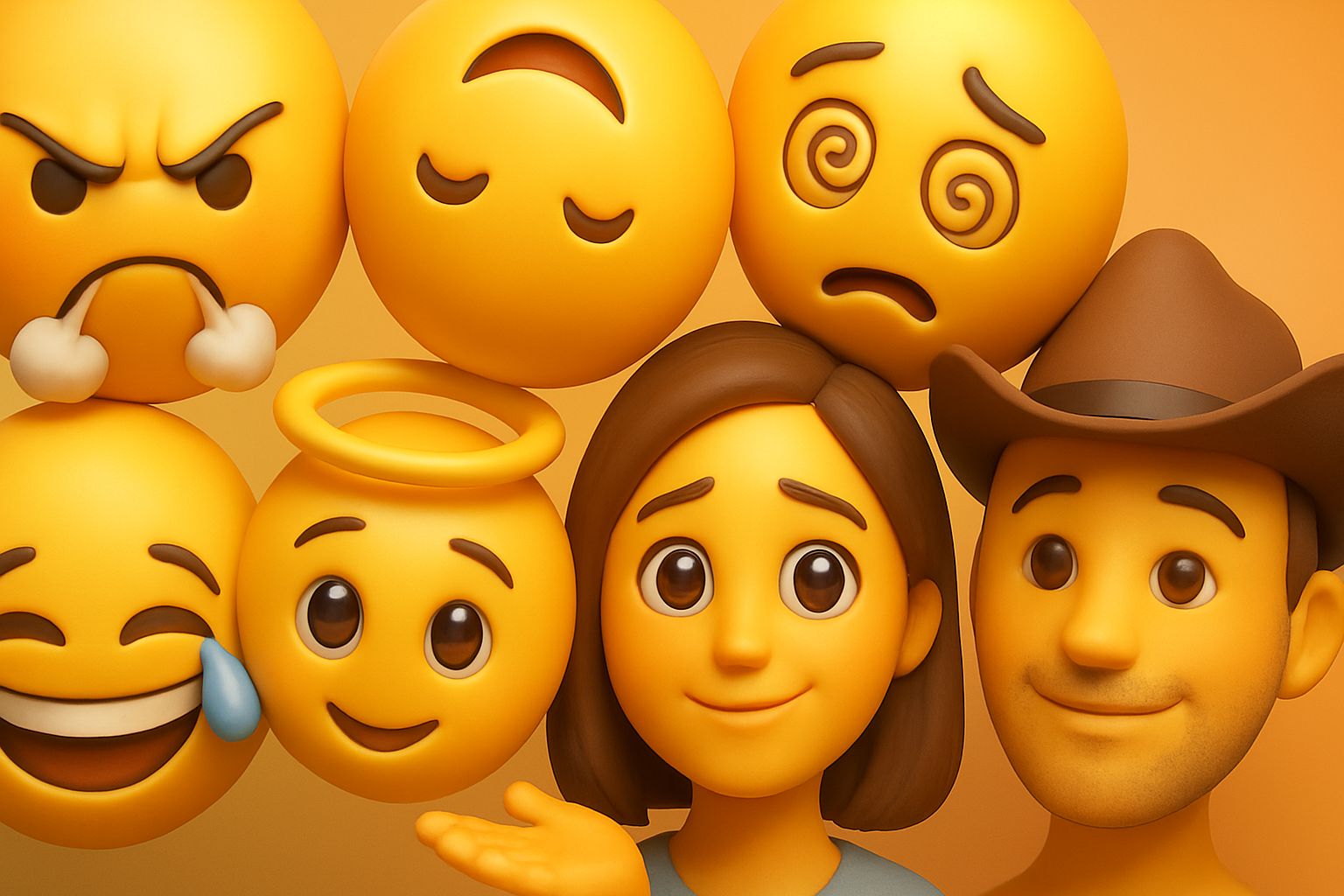Emoji are a language of emotions and symbols that have become an integral part of digital communication. They can replace whole sentences, conveying mood and subtext.
Despite their popularity, emojis are often misunderstood — due to cultural differences or variations in how they appear across devices. A smile may look sarcastic, and a gesture of thanks may be taken as a “high five.”
In this article, we’ll explore ten of the most commonly misused emojis and explain their real meanings.
🔹 Top 10 Emojis People Use Incorrectly
1. 😤 — “Angry” or “Steam from Nose”
❌ Common interpretation: Seen as anger, irritation, or frustration — like a character fuming.
✅ In fact: Unicode defines it as “Face with look of triumph.” It expresses confidence, determination, or pride after success.
📘 Examples:
• “I finally finished this project! 😤”
• “I’ll do it no matter what! 😤”
💡 Fun fact: Originally intended as a positive symbol of resolve, it later gained its “angry” reputation among users.
2. 🙃 — “Sarcasm” or “Silliness”
❌ Common interpretation: A silly upside-down smile.
✅ In fact: It conveys irony, sarcasm, or playful ambiguity — “I’m joking, but kind of serious.”
📘 Examples:
• “Forgot my password again. Of course. 🙃”
• “Everything’s great when nothing goes right 🙃”
💡 Fun fact: In English-speaking spaces, 🙃 often implies passive-aggressiveness — smiling through annoyance.
3. 💀 — “Fear” or “Death”
❌ Common interpretation: Literally represents death or something grim.
✅ In fact: Online, 💀 means “I’m dead from laughing.” Used in memes and jokes.
📘 Examples:
• “That video killed me 💀”
• “Your reaction—I can’t! 💀💀💀”
💡 Fun fact: Social media users replaced 😂 with 💀 to express even stronger laughter.
4. 🥴 — “Drunk” or “Sick”
❌ Common interpretation: A tipsy or dizzy face.
✅ In fact: It represents confusion, exhaustion, or emotional fatigue.
📘 Examples:
• “Three hours in the sun and I look like this 🥴”
• “Too much work for one day 🥴”
💡 Fun fact: Its ambiguity made it popular among youth to describe “emotional hangovers.”
5. 🙏 — “Prayer”
❌ Common interpretation: Praying hands, used in religious or thankful contexts.
✅ In fact: Unicode defines it as a “gesture of thanks or greeting,” sometimes a high five.
📘 Examples:
• “Thanks for your help 🙏”
• “Hope everything goes well 🙏”
💡 Fun fact: Though not religious by design, it’s now widely used to mean prayer or gratitude.
6. 🥺 — “Sadness” or “Crying”
❌ Common interpretation: Simply a sad face.
✅ In fact: It conveys pleading, affection, or gentle begging — the “puppy eyes” look.
📘 Examples:
• “Can I have another piece of cake? 🥺”
• “Don’t be mad, I’m nice 🥺”
💡 Fun fact: Became viral for its emotional expressiveness, often paired with 💖 or ✨.
7. 😅 — “Smile”
❌ Common interpretation: Just another happy smile.
✅ In fact: A nervous or relieved smile after a stressful situation.
📘 Examples:
• “Almost missed the meeting 😅”
• “Said something dumb in front of my boss 😅”
💡 Fun fact: A bridge between 😄 and 😰 — it blends humor with embarrassment.
8. 😇 — “Angel”
❌ Common interpretation: Innocence or goodness.
✅ In fact: Often used ironically — “I didn’t do anything!” or “I’m totally innocent!”
📘 Examples:
• “Accidentally ate the last slice 😇”
• “Didn’t come late at all today 😇”
💡 Fun fact: Its double meaning makes it a favorite for playful self-irony.
9. 💁 — “Sassy Girl”
❌ Common interpretation: A dismissive “whatever” gesture.
✅ In fact: Unicode describes it as an “information desk person” offering help. Online, though, it conveys confidence or sass.
📘 Examples:
• “I know I’m right 💁”
• “That’s just who I am 💁”
💡 Fun fact: Once depicted as both male and female, it evolved into a symbol of confidence and irony.
10. 🤠 — “Cowboy”
❌ Common interpretation: Just a cheerful cowboy.
✅ In fact: Used ironically to show awkward optimism — “I’m fine… kinda.”
📘 Examples:
• “Trying to act confident after failing 🤠”
• “At work with zero sleep but still smiling 🤠”
💡 Fun fact: Became a meme for “smiling through the pain.”
🔹 Why Emoji Confusion Happens
Different renderings: Emojis look different on each platform — a friendly smile on one may seem sarcastic on another.
Cultural context: A joking emoji in one country may offend in another.
Text without tone: Without voice or facial cues, emojis can be misread.
No emotional standard: Unicode defines visuals, not tone, so users invent their own interpretations.
Generational gap: Younger users use emojis ironically, older ones literally — causing a “emoji gap.”
🔹 How to Understand Emojis Correctly
Check meanings — look up official Unicode definitions.
Mind the context — what’s fine with friends may not fit in formal chats.
Be culturally aware — meanings differ globally.
Watch the tone — the same emoji can feel friendly or rude depending on context.
Ask if unsure — it’s better to clarify than misinterpret.
🔹 Conclusion
Emoji are more than decoration — they’re a compact emotional language blending humor, irony, and culture. Misunderstanding them can twist the message or cause tension.
With a bit of awareness, we can use emojis to connect, not confuse.
So next time you send 🥺 or 🙃, remember — every emoji has its own story, meaning, and nuance.
